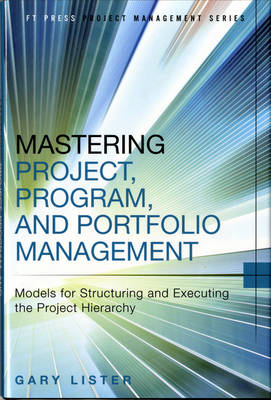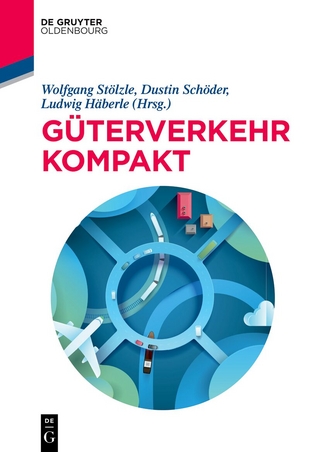
Mastering Project, Program, and Portfolio Management
Pearson FT Press (Verlag)
978-0-13-383974-6 (ISBN)
- Titel ist leider vergriffen;
keine Neuauflage - Artikel merken
Plan projects and strategies to reflect your organization's needs and structures
Develop and implement a successful Project Management Office (PMO)
Organize projects, programs, and portfolios
Systematically maximize the business value of project management
This book is part of a new series of six cutting-edge project management guides for both working practitioners and students. Like all books in this series, it offers deep practical insight into the successful design, management, and control of complex modern projects. Using real case studies and proven applications, expert authors show how multiple functions and disciplines can and must be integrated to achieve a successful outcome. Individually, these books focus on realistic, actionable solutions, not theory. Together, they provide comprehensive guidance for working project managers at all levels, as well as indispensable knowledge for anyone pursuing PMI/PMBOK certification or other accreditation in the field.
Gary Lister, MBA, MSQA serves as Adjunct Professor, School of Business, Middle Georgia State College. In addition to his long career as a government executive, he has served in the roles of consultant, corporate trainer, instructor, mentor, coach, and advisor for many years. Mr. Lister is currently Deputy Director of the Fighter Avionics Squadron at the Warner Robins Air Logistic Complex. He manages the repair of F-15, F-16, F-22, and F-35 avionic systems, electronic warfare systems, and countermeasures. His repair portfolio includes navigational controls and indicators, electronic jammers, flare/flack dispensers, computers, displays, processors, controllers, radar, and radar warning components. Mr. Lister earned a Master of Business Administration degree with an Accounting concentration and a Bachelor of Business Administration degree with an Accounting concentration from Georgia College and State University in Milledgeville, Georgia, and a Master of Science in Quality Assurance degree from Southern Polytechnic State University in Marietta.
Preface xvi
Chapter 1: Project Management Roots and Understanding the PMBOK Guide 1
Introduction 1
Learning Objectives 2
Why Are Projects Important? 3
Common Causes of Project Failure 4
Who Are Project Managers? 6
Project Management Roots 8
Key Concepts of Project Management 9
The PMBOK Guide—the Standard 9
The PMBOK Guide’s 5 Project Management Process Groups 11
The PMBOK Guide’s 10 Knowledge Areas 12
The PMBOK Guide’s 47 Project Management Processes (in Process Group then Knowledge Area Order) 12
How to Use the PMBOK Guide 15
Where the Activity Occurs 18
Project Management Issues Not Addressed by the PMBOK Guide 23
Emerging Issues Likely to Be Addressed in Future Editions 26
Common Project Management Methodologies 27
Summary 35
Key Terms You Should Know 35
Discussion Questions 36
Exercises 38
Final Points 38
Chapter 2: What Is a Project? 41
Introduction 41
Learning Objectives 42
PMBOK Guide Concepts Covered in this Chapter 42
What Projects Are Not 42
What Are Projects? 43
The Project Triangle 47
Projects Often Present Special Challenges and Opportunities 48
What Are Ongoing Operations? 49
Where Do Projects Come From? 50
There Are Valuable Lessons in Project Management History 50
How Projects Differ from Programs and Portfolios 50
The Manager 51
PMI Certifications 52
Summary 57
Processes and Procedures 58
Key Terms You Should Know 59
Discussion Questions 60
Exercises 64
Final Points 65
Chapter 3: Operations Management and Project Management 67
Introduction 67
Learning Objectives 67
What Is Operations Management 68
What Are Goods and Services? 70
Where Operations Management and Project Management Differ 75
What the PMBOK Guide Says About Operations Management 75
The History of Operations Management 77
The Industrial Revolution 78
The Scientific Management Era 79
Summary 81
Key Terms You Should Know 82
Discussion Questions 82
Exercise 83
Final Points 83
Chapter 4: Organizational Influences 85
Introduction 85
Learning Objectives 86
Charting the Organizational Influences and Culture 86
Where Projects Fit in the Organization 88
Organizations Shape the Projects—and Vice Versa 89
Culture and Style also Shape Projects 90
Organizations 91
Organizational Communications 93
Organizational Structure Also Has an Impact 93
Summary 94
Key Terms / Review 94
Discussion Questions 95
Exercise 96
Chapter 5: Project Management 97
Introduction 97
Learning Objectives 99
Start Simply 100
Add as Required 100
Larger Projects 101
I Was There 102
Chaos Reigns 102
My Projects and Project Management Office 104
Choosing Wisely 105
The Differences 108
The Need 108
The Commonalities 110
Change 111
The Environment 111
The Challenges of Project Management 112
Project Management Skills 113
Project Success 117
Project Management Functions 118
Initiate, Define, Start 119
Summary 127
Key Terms / Review 128
Discussion Questions 128
Exercises 130
Chapter 6: Program Management 131
Introduction 131
Learning Objectives 131
A Program 132
Everyone Has 133
My Programs 133
Not Just Bigger and More 134
Programs Are Large 135
Key Differences in Job Focus 137
Summary 137
Discussion Questions 138
Final Points 138
Key Terms You Should Know 139
Exercise 139
Chapter 7: Portfolio Management 141
Introduction 141
Learning Objectives 141
If It Works 142
Portfolios Consist of Projects 142
Project Portfolio Flow 143
Visual Portfolio 145
Start Simply—But Start 147
Summary 148
Discussion Questions 149
Exercise 149
Chapter 8: The Project Management Office 151
Introduction 151
Learning Objectives 151
Tipping Point 152
What Is a PMO? 152
What’s Changing with PMOs? 154
Accidents 155
ARMIS 156
Structure? Or No Structure? 158
What a PMO Might Look Like 159
A Portfolio of Projects 162
Dance with the One Who Brought You 162
The PMBOK Guide on PMOs 163
Summary 164
Key Terms You Should Know 164
Discussion Questions 165
Exercises 165
Final Points 166
Appendix A: Knowledge Area from the PMBOK Guide 167
Appendix B: Project Management Institute: Code of Ethics and Professional Conduct 175
Index 185
| Verlagsort | NJ |
|---|---|
| Sprache | englisch |
| Maße | 163 x 236 mm |
| Gewicht | 416 g |
| Themenwelt | Wirtschaft ► Betriebswirtschaft / Management ► Logistik / Produktion |
| Wirtschaft ► Betriebswirtschaft / Management ► Projektmanagement | |
| Wirtschaft ► Betriebswirtschaft / Management ► Unternehmensführung / Management | |
| ISBN-10 | 0-13-383974-5 / 0133839745 |
| ISBN-13 | 978-0-13-383974-6 / 9780133839746 |
| Zustand | Neuware |
| Haben Sie eine Frage zum Produkt? |
aus dem Bereich


